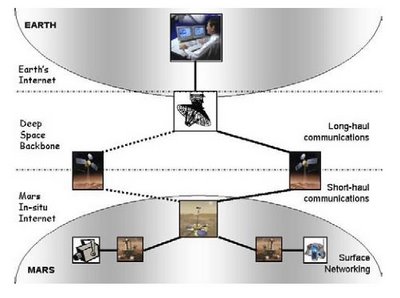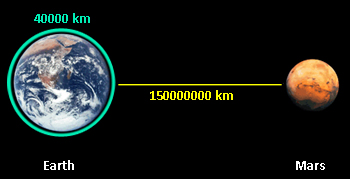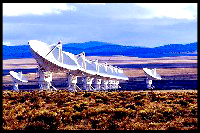Interplanetary Internet
From Computing and Software Wiki
The Interplanetary Internet is a network of independent nodes in outer space that will act as the communication infrastructure between planets in our galaxy. It the next step in the natural evolution of the Internet. As mankind continues to make extraordinary accomplishments in outer space exploration, the communications system which currently resides is becoming less applicable.
Since the distances between planets such as Earth and Mars are of such great magnitude, their needs to be a more efficient way of sending data back and forth without interruption. With this network infrastructure in place, the current communication problems that plague outer space missions will be avoided. This would in turn allow mission designers to create smaller aircraft's since payloads would be used less for communications equipment.
Contents |
Background
The idea of the Interplanetary Internet was first created by Vint Cerf when envisioning the future direction of the Internet. His vision was a network of networks linked together by gateway's and run through the use of the Internet Protocol (IP) suite. The network would form a backbone connecting a series of hubs on or around planets, ships, and at other points in space. These hubs would provide high-capacity, high-availability Internet traffic over distances that could stretch up to hundreds of millions of kilometers.[1]The Interplanetary Internet will be used for many different types of applications. Among them will be reliable communication between earth and other planets in our solar system.
The Interplanetary Internet will consist of three types of networks, working in conjunction. These are the backbone, planetary , and external network. the backbone will provide the common infrastructure for communication between earth ,planets, satellites, and relay stations. The eternal network will consist of clusters of satellites flying between planes and other nodes, acting as a medium to forward packets. The planetary network is used to connect satellites orbiting a planet to its ground network.[3]
Deep space exploration, until now, has been relying on sending a radio signal to a node when it came into range.[1] Software was being developed for one mission at a time, which decreased production time and the risk of errors. Placing a network in the sky, with each device acting as a node opens up the flexibility to provide readily accessible information quickly. With a network of remote nodes linked together, scientists and engineers could simply access information related to space missions as if checking email.
Applications
The Interplanetary Internet would serve as the primary data link between any residual points in outer space. An immediate application would be reliable data transfer between a mars rover and earth. The graphic to the right shows the steps of communication from one end point of the network to the next.
Challenges
Networking together the galaxy is no simple feat. Th development and maintenance of the Interplanetary Internet faces many unique challenges that need to be over come.
Security Threats
One of the bigger challenges facing the Interplanetary Internet is security. For a network that could potentially be used as a life line between astronoauts in space, and the earth, it is extrememly important to make sure there is no corruption of the system. Devlopers have been looking into a protocol which will be inpenetrable by hackers. One of the options to control access, recently being discusedd is a variation of the Transport Layer Security (TLS) protocol. The TLS protocol allows client/server applications to communicate across a network in a way designed to prevent eavesdropping, tampering, and message forgery. TLS provides endpoint authentication and communications confidentiality over the Internet using cryptography. [1]
Technical Challenges
The technical challenges involved with the Interplanetary Internet are similar to those of any space oriented mission. Each of the nodes in the Internet will be potentially millions of kilometers from earth. Any damage to equipment will be expensive and timely to fix. This means that the transmission equipment used will have to be designed to be more robust than ever before. This problem is also being looked into by ensuring that multiple disabled nodes in the netrok does not discontinue to transmission of packets across te network.
Physical Challenges
There are certain unavoidable physical limitations when dealing with the Interplanetary Internet. The distances involeved are in ther ange of hundreds of millions of kilometers. At these distances, the time interval for a message leaving earth to arrive at mars will range anywhere from 3 to 10 minutes. This sort of lag is something the traditional internet is not accustomed to. When a user makes a request on the Internet, the server responds by performing the request. This is a process that appears to happen instantly. This type of immediacy will dissolve as soon as the Internt exapnds into space. The Interplanetry Internet will run on a new process that uses a store and frward methodology in order to acheive more reliable rate of communcication.[1] This process will be based on an entirely new set of rules called the Parcel Transfer Protocol (PTP).
Parcel Transfer Protocol
One of the major problems faced by the network of communication in outer space today, is the fragile connection strength between points. In order for earth to relay a message to mars, there must be a direct line of sight. Any object between the reciever and signal transmitter will obstruct the communication. The Parcel Transfer Protocol will avoid thi problem by sing the store and forwad method for packet transmission. The protocol would process an information request sent to a gateway and forward it to a final destination. The gateway would then check, process and forward information back down the path it came.[1]
Disruption Tolerant Networking
Disruption Tolerant Networking (DTN) DTN sends information in a way that is unlike that of the traditional Internet's TCP/IP method. Throug hthe direction of Vint Cerf, DTN does not assum an end to end connection, which is the case with the TCP/IP suite. As noted earlier, many problems arise when a spacecraft is not in direct line with the end point reiever. For example, when a spacecraft is behind a planet, t cannot communicate with earth anymore, since the line of sight has been detroyed. [5]
See also
- Ethernet Routing Devices
- Systems for Detecting Network Intrusion
- Satellite Networking
- Hypertext Transfer Protocol over Secure Socket Layer (HTTPS)
- Computer Network Traffic Shaping
- Systems for Detecting Network Intrusion
References
- IEEE Spectrum : Joab jackson, 2006. <http://www.spectrum.ieee.org/aug05/1700>
- How Interplanetary Internet Will Work : Kevin Bonsor, 2009.<http://computer.howstuffworks.com/interplanetary-internet.htm>
- Interplanetary Routing : Min Sheng, Ge Xu, Xia Fang, 2006. <http:://www.china-cic.org.cn/english/digital%20library/200612/9.pdf>
- On the Edge : Rich Gray, 2003. <http://www.space.com/businesstechnology/technology/ontheedge_0305.html>
- Interplanetary Internet : Wikipedia, 2009. <http://en.wikipedia.org/wiki/Interplanetary_Internet>
- Focus On : Interplanetary Internet : Mark Boucher, 1999-2009. <http://www.spaceref.com/focuson/ipn/>
- Delay-Tolerant Networking : Wikipedia, 2009. <http://en.wikipedia.org/wiki/Delay-tolerant_networking>
- IPN Technical Info : IPN SIG, 2008. <http://www.ipnsig.org/techinfo.htm>
External links
- SpaceRef.com - Focus On the InterPlanetary Internet
- HowStuffWorks.com - How Interplanetary Internet Will Work
- On The Edge - Interplanetary Internet
- Astrology Magazine The Reverse Time Capsule
- Outer Space Communication - The Future
- Fusion Anomaly - Interplanetary
Signature
--ziebac 20:57, 4 April 2009 (EDT)




